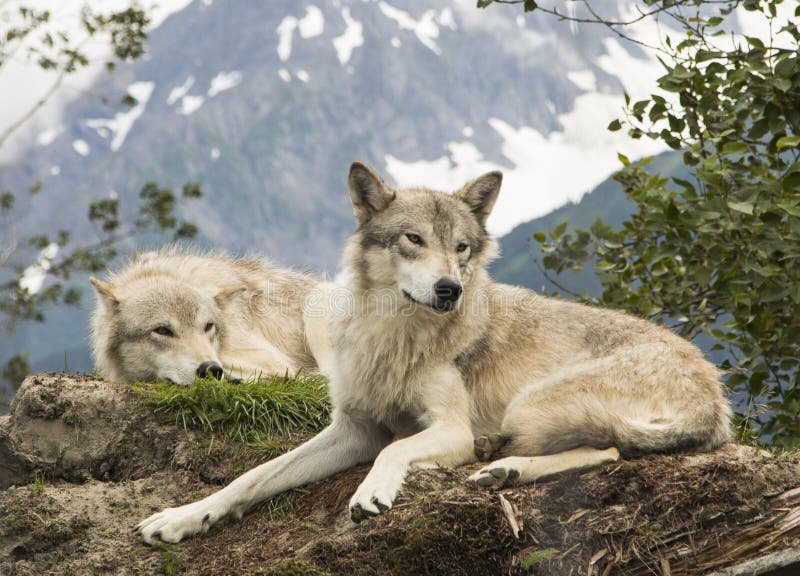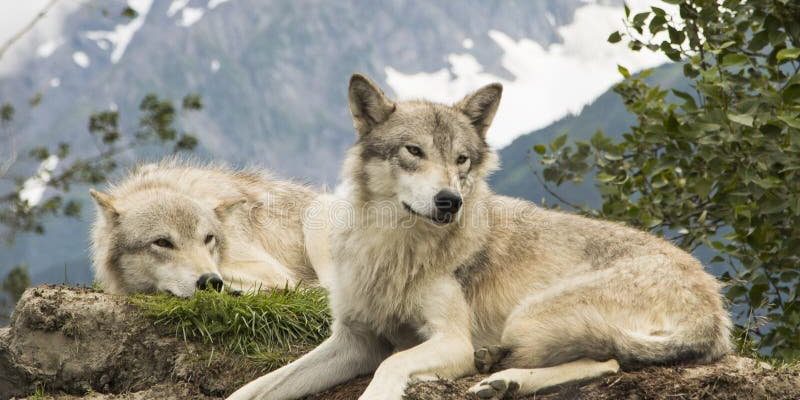
When tundra wolves have pups, their lives transform into a whirlwind of nurturing and protection. They don’t just raise their young; they prepare them for the rigorous challenges of life in the wild. It’s a dance of cooperation and learning, where even the smallest pup must find its place. So, grab a cup of coffee, and let’s dive into the remarkable world of tundra wolves and how they care for their young.
Understanding the Tundra Wolf Family Structure
Tundra wolves live in packs, typically consisting of a mated pair and their offspring. This family structure is critical for survival in the tundra, where resources can be scarce. Packs can range from 5 to 15 members, and each wolf has its role. The alpha pair, usually the dominant male and female, takes the lead in hunting, protecting their territory, and raising the pups.
Here’s the thing: even though the alpha pair is in charge, every member of the pack plays a part in the upbringing of the pups. You might see older siblings helping out, sharing food, or playing with the younger ones. It’s a community effort, showcasing the strength of teamwork in their challenging habitat.
Interestingly, younger pack members learn essential survival skills by observing and mimicking their parents and elders. For instance, when the adults go hunting, the pups watch carefully, learning the strategies and techniques necessary for catching prey. This observational learning is vital for their development and often sets the stage for their roles in the pack when they become adults.
Puppy Development Stages
When tundra wolves have pups, they usually give birth in late spring to early summer when food is more abundant. The gestation period lasts about 63 days, and a typical litter consists of 4 to 7 pups. From the moment they’re born, these little furballs are completely dependent on their parents. They’re born blind, deaf, and toothless, weighing only about a pound each.
During the first few weeks, the pups are kept in a den, which provides safety from predators and the harsh tundra elements. The mother wolf stays close during this time, nursing them and keeping them warm. It’s almost like having a cozy den that serves as a protective blanket, ensuring the pups stay safe until they’re strong enough to venture out.
As the weeks pass, the pups begin to open their eyes and ears, slowly experiencing the world. You might find them tumbling over each other, their playful antics a sign of their growing strength and curiosity. It’s a delightful sight—watching these tiny wolves explore their immediate surroundings, learning about their environment while also building social bonds with their siblings.
Feeding and Nutrition of Young Wolves
Feeding the pups is a big job for the pack. After the initial nursing phase, as pups grow, their diet begins to change. The mother wolf will start to regurgitate food from her recent hunts. This might sound a bit gross, but it’s crucial for the pups, providing them with rich nutrients. This soft food helps the pups transition from milk to solid meals.
Feeding time is also a great opportunity for socialization. When the pack gathers to eat, it strengthens their bonds and teaches the pups about hierarchy. The alpha wolves usually eat first, followed by the others, allowing the pups to learn their place in the pack. Honestly, it’s like a family dinner, with everyone taking part in a ritual that reinforces their roles and connections.
As the pups grow older, they start participating in hunts. Though they won’t catch large prey right away, they’ll begin to practice chasing small animals or even engaging in mock hunts with their siblings. It’s all about building confidence and skills, preparing them for the day when they’ll join the adults in the search for food.
Training and Socialization
Once the pups are about a month old, they start to leave the den for short periods. This is when the real training begins. Wandering outside, they encounter different stimuli—sounds, scents, and sights of the tundra. It’s like an outdoor classroom where each experience teaches them something new.
Parents will guide their pups with a mix of encouragement and correction. When a pup gets too curious and strays too far or ventures into dangerous territory, you might see a swift nudge from mom or dad to steer them back. It’s about learning boundaries and understanding the dangers in their environment.
Socialization with their siblings is equally important. Pups will wrestle, chase each other, and even practice their growls and barks. These interactions help develop their social skills and establish relationships that will last into adulthood. It’s a playful yet critical part of their upbringing, shaping their behavior and pack dynamics as they grow.
Protection and Care from the Pack
Protection is a key responsibility of the entire pack. Tundra wolves face threats from larger predators, such as bears or rival wolf packs. When pups are around, adult wolves become even more vigilant, often forming a protective circle around the young ones when danger is near.
You might think of it like a guardian squad. Each wolf stands watch, their eyes scanning for any signs of trouble. When a threat is spotted, the pack will work together to either chase it away or lead the pups to safety. It’s this instinctive behavior that ensures the survival of the young in a world that can be perilous.
Moreover, the care doesn’t stop at protection. As pups grow, they’re also taught how to interact with other wildlife. The adults will guide them away from potential conflicts or dangerous encounters, teaching them the art of survival in a balanced ecosystem. It’s all part of a robust education, preparing them for the realities of life on the tundra.
When Pups Become Adults
By the time autumn rolls around, tundra pups are ready to test their skills. They’ve grown stronger and more adept at navigating their environment. Sometimes you’ll see them joining in hunts, participating in pack activities, and even asserting themselves in playful yet competitive ways against their siblings.
As they transition into adulthood, they begin to separate from the pack, sometimes even forming their own packs. This natural dispersal is crucial for genetic diversity and helps prevent inbreeding. It’s a bit like sending them off to college, allowing them to forge their paths and find their own places in the wild.
But it’s not just about leaving home. Young wolves carry the lessons learned from their parents into their own parenting practices. The cycle continues as they eventually raise their pups, passing down the knowledge and behaviors essential for survival in the unforgiving tundra.
Caring for young tundra wolves is a remarkable blend of instinct, nurturing, and community. From the protective den to the playful learning experiences, every aspect of their upbringing is designed to prepare them for the wild. It’s a tough world out there, but the strength of the pack and the wisdom of their parents ensure that the next generation is ready to thrive.
So, next time you think of tundra wolves, remember: they’re not just solitary predators but dedicated parents and community members. Their ability to work together and nurture their young is a beautiful example of how teamwork and family bonds are crucial for survival in one of the most challenging environments on Earth.

